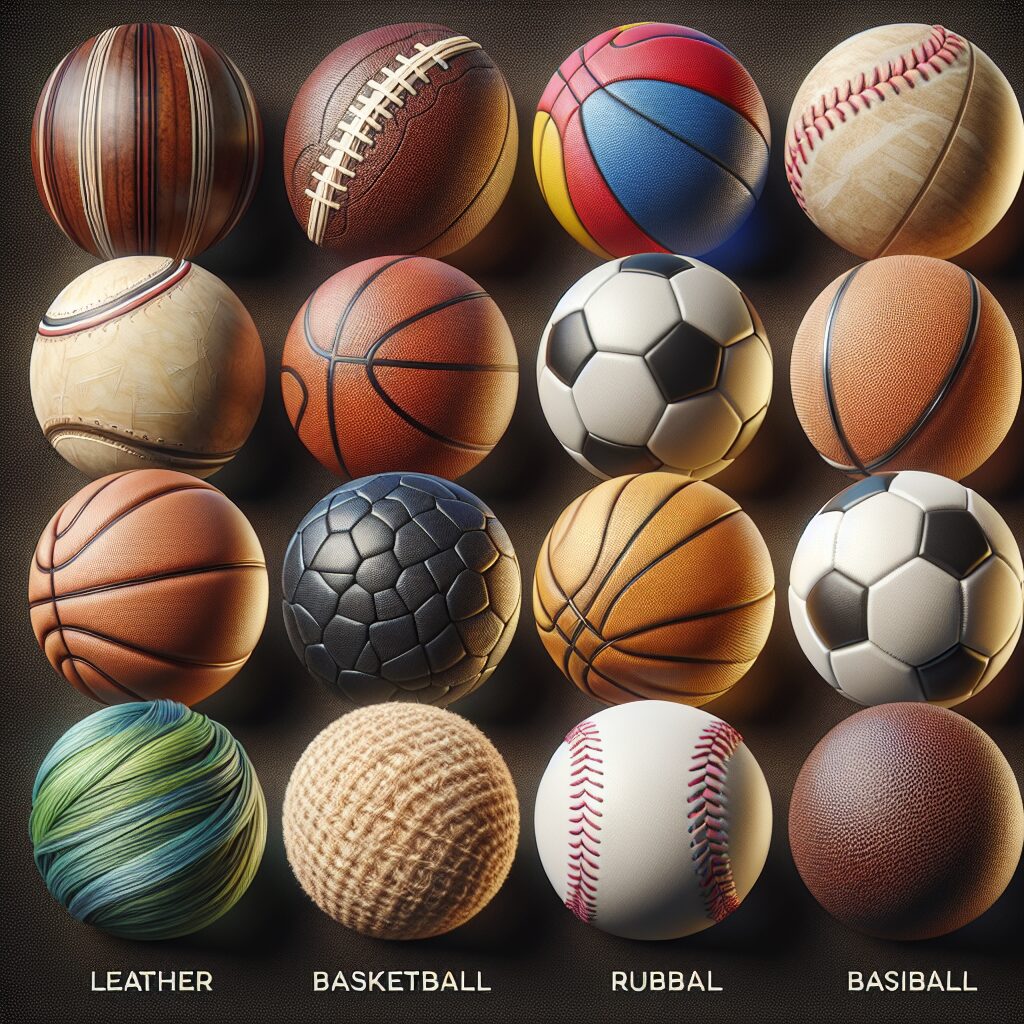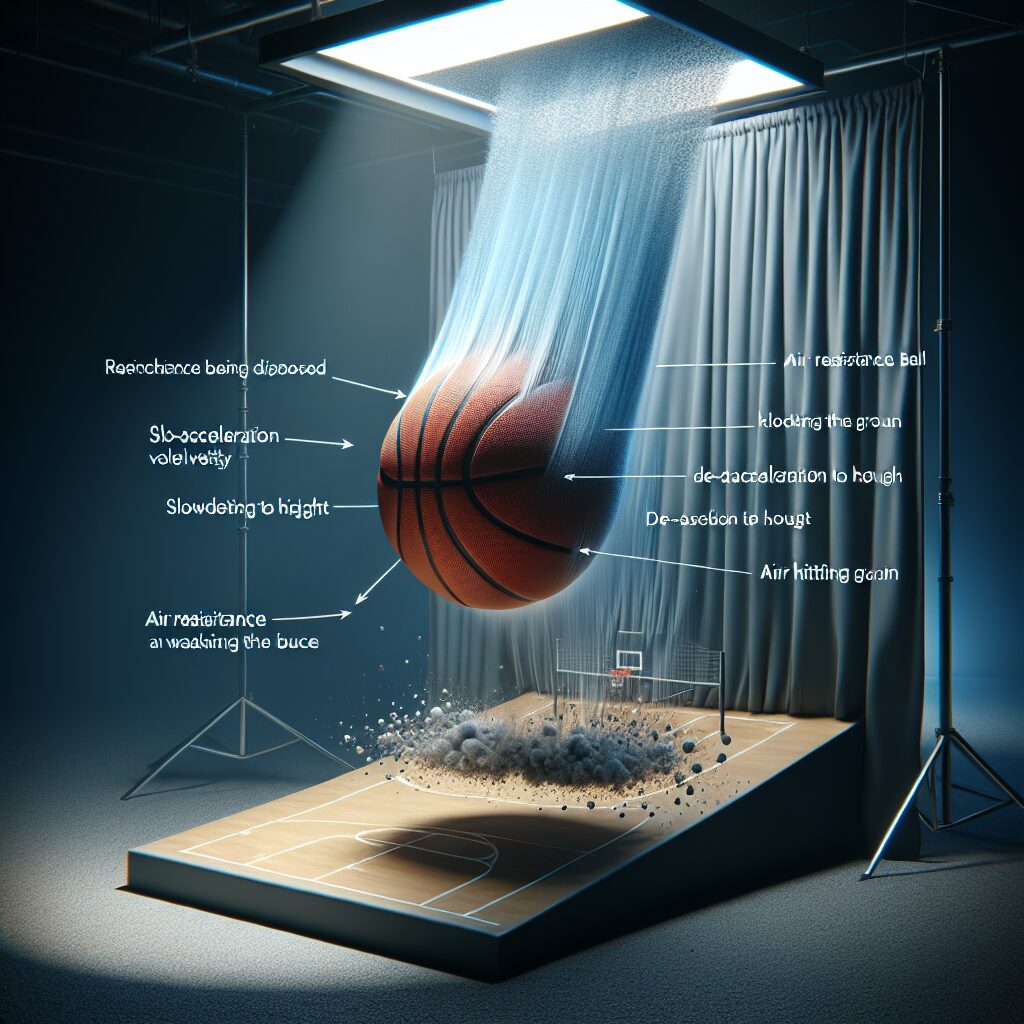Material Diversity: The Building Blocks of Different Balls
The world of sports is incredibly diverse, with countless types of balls designed for various purposes, from soccer to tennis and basketball. Have you ever wondered what makes these balls unique? It all comes down to the materials used in their construction. Material diversity is the key that unlocks the different properties and functionalities of these balls, ultimately enhancing the overall experience for athletes and enthusiasts alike.
When it comes to balls, material selection plays a crucial role in determining their performance and characteristics. For instance, soccer balls are commonly made of synthetic leather or polyurethane, providing durability and water resistance. On the other hand, basketballs often feature a composite leather cover, which offers a softer feel and better grip. Tennis balls, surprisingly, consist of a combination of wool and rubber, enabling optimal bounce and control on the court. These diverse materials directly impact the behavior of the balls during play, allowing athletes to master their skills in their respective sports.
In the upcoming sections, we will delve deeper into the fascinating world of material diversity in balls. We will explore the specific impacts and unique features of various materials used in different types of balls. Additionally, we will discuss the advancements in ball manufacturing techniques, as well as the future possibilities for creating even more innovative and performance-enhancing designs. So, without further ado, let’s dive into the key takeaways that will shed light on the building blocks of these remarkable sports essentials.
Key Takeaways
Key Takeaways:
1. Material diversity in ball design is crucial for achieving desired performance characteristics, such as speed, spin, and control.
2. Different materials, such as rubber, foam, plastic, and composite materials, are used in combination to create balls with specific properties.
3. The choice of materials depends on factors like the sport, playing surface, and desired level of durability.
4. The manufacturing process for balls involves molding, cutting, and assembling the different materials to create the final product.
5. Research and development efforts continue to explore new materials and designs to enhance the performance and functionality of various types of balls.
Title: How Does Material Diversity Shape the Building Blocks of Different Balls? A Comprehensive Guide
Section 1: Understanding the Significance of Material Diversity
Why does Material Diversity Matter for Ball Construction?
When it comes to manufacturing balls for various sports and recreational activities, the choice of materials used plays a crucial role. Material diversity directly influences the performance, durability, and overall feel of a ball. Different materials offer unique properties that cater to specific requirements, allowing for better gameplay and enhanced user experience.
Section 2: Exploring Key Materials Used in Ball Construction
1. Leather: Traditional and Timeless Appeal
Leather has long been a popular choice for constructing balls due to its durability, flexibility, and soft touch. Particularly used in sports such as football, rugby, and cricket, leather provides a superior grip and responsiveness, allowing players to have better control over the ball. However, maintenance and the need for specific weather conditions can be a drawback in some cases.
2. Synthetic Materials: Innovation and Performance
With advancements in technology, synthetic materials like polyurethane, PVC, and rubber have gained prominence in ball construction. These materials offer greater consistency and durability, making them ideal for outdoor use. Additionally, synthetic materials ensure cost-effectiveness without sacrificing performance, making them widely adopted across various sports like soccer, basketball, and volleyball.
3. Rubber: Bounce and Resilience
Rubber, known for its excellent elasticity and shock-absorbing properties, is commonly used in the construction of balls that require high bounce and resilience. Bouncy balls such as those used in basketball and tennis heavily rely on rubber for their core construction. Furthermore, rubber balls are suitable for both indoor and outdoor use due to their ability to withstand various playing surfaces.
Section 3: Tailoring Materials for Specific Ball Types
1. Golf Balls: Optimizing Flight and Control
Golf balls come in diverse designs and are tailored to fulfill specific requirements. The core, cover material, and dimple patterns significantly impact the overall performance. For instance, a solid rubber core surrounded by a thin urethane cover allows for increased control and spin, while a softer core with a Surlyn cover promotes distance and forgiveness.
2. Tennis Balls: Balancing Speed and Consistency
Tennis balls require careful material selection to offer an optimal balance of speed, bounce, and consistency. The core, made of rubber or a combination of rubber compounds, ensures an appropriate rebound effect. Felt, commonly made from wool or synthetic fibers, covers the ball, providing durability and maintaining consistent ball behavior throughout play.
Section 4: Analyzing the Impact of Material Diversity on Gameplay
The Influence of Ball Materials on Performance and Skill
The materials used in ball construction directly impact gameplay, skill requirement, and performance level. Balls with superior grip help maintain control during fast-paced movements, while those with enhanced bounce or spin capabilities introduce additional challenges and skill requirements. Material diversity ensures that different sports and activities have balls customized to optimize gameplay characteristics.
Section 5: Practical Tips for Choosing the Right Ball Material
1. Consider the Playing Surface
Different ball materials perform differently on various playing surfaces. Determine whether the ball will be used on grass, artificial turf, hardwood floors, or other surfaces to select the most suitable material.
2. Assess Durability Requirements
Evaluate the expected intensity and frequency of use to ensure the chosen ball’s material can withstand the demands of the activity while maintaining its performance over time.
3. Understand Sport-Specific Needs
Each sport and recreational activity may have specific requirements for optimal gameplay. Research the preferred materials and their impact on performance to make an informed choice.
4. User Experience and Comfort
Consider comfort, touch, and feel to ensure an enjoyable user experience. Some materials may be preferable due to their softness or ability to absorb impact.
5. Seek Recommendations and Expert Advice
When in doubt, consult professionals or experienced players who can provide valuable insights on the best ball materials for specific purposes.
Frequently Asked Questions
1. What is material diversity in relation to different balls?
Material diversity refers to the use of various materials in the manufacturing of different balls. Different materials offer unique properties and characteristics, which ultimately impact the performance and functionality of the balls.
2. How does material diversity affect the performance of sports balls?
Material diversity plays a crucial role in the performance of sports balls. For example, in soccer, a ball made of synthetic materials may have better water resistance and durability compared to a traditional leather ball. Similarly, a basketball made with a rubberized surface offers better grip and bounce.
3. What are some commonly used materials in different balls?
Commonly used materials in different balls include leather, rubber, synthetic materials (such as PVC or polyurethane), nylon, and various types of foam.
4. Are there any advantages to using natural materials in ball manufacturing?
Yes, natural materials like leather can provide a unique feel and responsiveness to the ball, particularly in sports like basketball or baseball. However, natural materials may require more care and maintenance compared to synthetic options.
5. How does material diversity contribute to player safety?
Material diversity can contribute to player safety by providing balls with proper shock absorption capabilities. For example, in tennis, a ball made with a softer foam-like material can help reduce the risk of injuries on impact.
6. Are there any environmental considerations related to material diversity?
Yes, material diversity can have environmental implications. Balls made with sustainable or recycled materials can help reduce the overall ecological footprint associated with their production and disposal.
7. How can material diversity impact the cost of balls?
The materials used in the manufacturing process directly impact the cost of balls. Natural materials like leather can be more expensive compared to synthetic alternatives, which can affect the overall price of the balls.
8. Do different sports require specific materials in their balls?
Yes, different sports often have specific requirements for ball materials. For example, a golf ball typically consists of a variety of materials, including a solid core, multiple layers, and a dimpled cover, to achieve the desired flight characteristics.
9. Are there any emerging materials being used in ball manufacturing?
Yes, ongoing technological advancements have led to the emergence of new materials for ball manufacturing. For instance, graphene-infused materials are being explored for their potential to enhance the strength and durability of sports balls.
10. Can material diversity contribute to the overall innovation in ball design?
Definitely! Material diversity enables manufacturers to experiment and innovate in ball design, creating products with improved performance, durability, and other desirable characteristics.
Final Thoughts
The concept of material diversity serves as a cornerstone in the evolution of different balls. The choice of materials used in their construction significantly impacts their performance, safety, and overall playing experience. By embracing material diversity, sports equipment manufacturers can continue to push the boundaries of innovation, ultimately benefiting athletes and sports enthusiasts alike.
As we continue to explore the possibilities and push the limits of material science, it is exciting to envision the future of different balls. With advancements in manufacturing techniques and the development of new materials, we can anticipate even greater improvements in terms of durability, performance, and sustainability. Material diversity truly lays the foundation for an exciting future in the world of sports.




